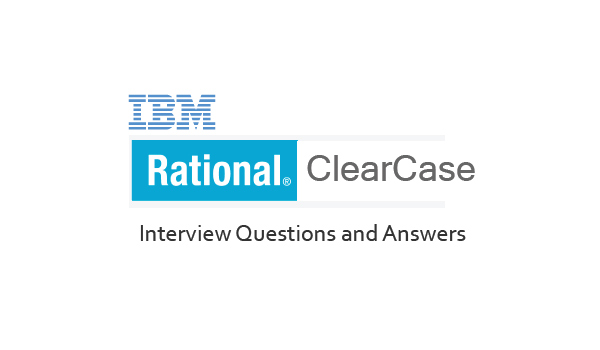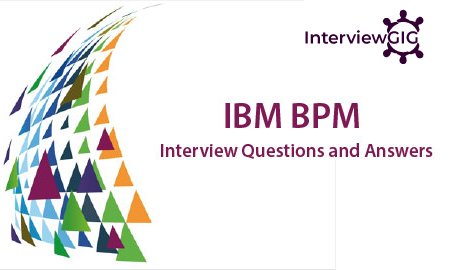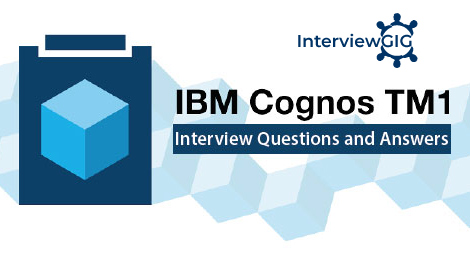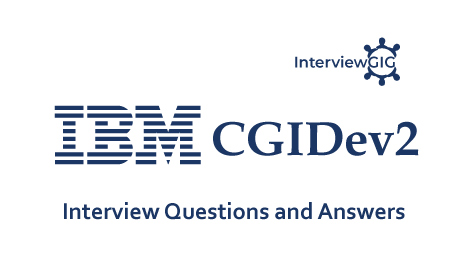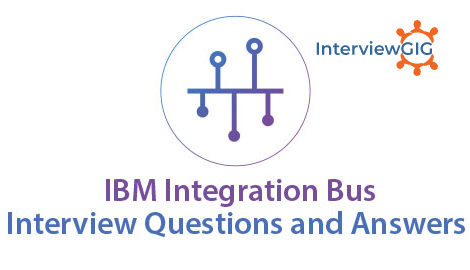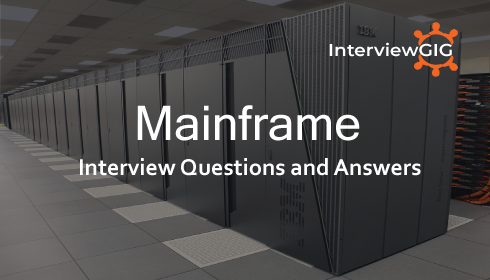What is IBM AIX?
AIX (Advanced Interactive eXecutive) is a series of proprietary Unix operating systems developed and sold by IBM for several of its computer platforms. Originally released for the IBM 6150 RISC workstation, AIX now supports or has supported a wide variety of hardware platforms, including the IBM RS/6000 series and later IBM POWER and PowerPC-based systems, IBM System i, System/370 mainframes, PS/2 personal computers, and the Apple Network Server. AIX is based on UNIX System V with 4.3BSD-compatible extensions. It is one of four commercial operating systems that are presently certified to The Open Group’s UNIX 03 standard (The others are Mac OS X, Solaris and HP-UX.)
What is System Management Interface Tool (SMIT)?
SMIT is the System Management Interface Tool for AIX. It allows a user to navigate a menu hierarchy of commands, rather than using the command line. Invocation is typically achieved with the command smit. Experienced system administrators make use of the F6 function key which generates the command line that SMIT will invoke to complete the proposed task. SMIT also generates a log of commands that are performed in the smit.script file. The smit.script file automatically records the commands with the command flags and parameters used. The smit.script file can be used as an executable shell script to rerun system configuration tasks. SMIT also creates the smit.log file, which contains additional detailed information that can be used by programmers in extending the SMIT system.
What are the unique features of AIX ?
The following are some unique system management features of AIX.
Logical Volume Manager: The Logical Volume Manager (LVM) maintains the hierarchy of logical structures that manage disk storage.
System Resource Controller: The System Resource Controller (SRC) provides a set of commands and subroutines for creating and controlling subsystems and is designed to minimize the need for human intervention in system processing.
Object Data Manager: The Object Data Manager (ODM) is a data manager intended for the storage of system data.
Software Vital Product Data: Certain information about software products and their installable options is maintained in the Software Vital Product Data (SWVPD) database.
Workload management: Workload Manager (WLM) is designed to provide the system administrator with increased control over how the scheduler virtual memory manager (VMM) and the disk I/O subsystem allocate resources to processes. You can use WLM to prevent different classes of jobs from interfering with each other and to allocate resources based on the requirements of different groups of users.
Operating system updates: The operating system package is divided into filesets, where each fileset contains a group of logically related customer deliverable files. Each fileset can be individually installed and updated.
Explain the AIX file system.
- AIX uses a hierarchical file tree that consists of directories, subdirectories and files.
- The top-level directory is called the root (/) directory that has many subdirectories.
- The file tree is mounted during the system startup.
What are the keyboard shortcuts used on AIX terminal?
- Backspace: to correct mistakes.
- <ctrl+c>: terminates the correct command and return to the shell.
- <ctrl+d>: end of transmission or end of file
- <ctrl+s>: temporary stops the output to the screen
- <ctrl+q>: resumes output which was stopped by ctrl+s
- <ctrl+u>: erases the entire line.
What is Server Message Block file system(SMBFS) in AIX?
Server Message Block Filesystem (SMBFS) allows access to shares on SMB servers as local filesystems on AIX. In this filesystem, the user can create, delete, read, write, and modify the access times of files and directories. The owner or access mode of files and directories cannot be changed.
SMBFS can be used to access files on an SMB server. The SMB server is a server running Samba; an AIX server running AIX Fast Connect; or a Windows XP, Windows NT, or Windows 2000 server or workstation. Each of these server types allows a directory to be exported as a share. This share can then be mounted on an AIX system using SMBFS.
SMBFS installation: To install SMBFS on an AIX system, install the bos.cifs_fs package.
SMBFS mounting: The Server Message Block Filesystem (SMBFS) can be mounted in one of two ways.
Stored passwords: SMBFS can store server/user/password credentials in the /etc/cifs_fs/cifscred file to allow automatic retrieval of passwords when mounting SMBFS.
/etc/filesystems support: SMBFS supports /etc/filesystems to allow automated mounting at system startup.
How do I create a logical volume?
#mklv -y name_of_logical_volume name_of_volume_group number_of_partition
How do I increase the size of a logical volume?
To increase the size of the logical volume represented by the lv05 directory by three logical partitions, for example, type extendlv lv05 3.
How do i list information about logical volumes?
Run the following command to display information about the logical volume #lv1: lslv lv1
How can i clone the rootvg?
You can run the alt_disk_copy command to copy the current rootvg to an alternate disk. The following example shows how to clone the rootvg to hdisk1: alt_disk_copy -d hdisk1.]
How do I replace a disk?
extendvg VolumeGroupName hdisk_new
migratepv hdisk_bad hdisk_new
reducevg -d VolumeGroupName hdisk_bad
How do I mirror a logical volume?
mklvcopy LogicalVolumeName Numberofcopies
syncvg VolumeGroupName
How can I display or set values for network parameters?
The no command sets or displays current or next boot values for network tuning parameters.
How do I get the up address of my machine?
Type one of the following: ifconfig -a or host Fully_Qualified_Host_Name. For example, host cyclop.austin.ibm.com.
How do i identify the network interfaces on my server?
Either of the following two commands will display the network interfaces: lsdev -Cc if or ifconfig -a. To get information about one specific network interface, for eaxample tr0, run the command ifconfig tr0.
How do i activate a network interface?
To activate the network interface tr0, run the command ifconfig tr0 up.
Difference between JFS & JFS2?
JFS: JFS is normal filesystem. We cannot create large files in JFS.
Files can be access dynamically.
Max file system size=1TB
Max file size=64GB
Inode size=128b
JFS2: Can create a large size filesystem.
Files can be access accordingly as required. (not randomly or sequentially)
Max files system size=4PB
Max file size=4PB
Inode size=512
How will you find LTG size?
#lsvg vgname
#lquerypv –M hdiskname
How will you unmirrored a vg if a pv gets failed?
First check the blv record using,
# bootlist –m normal –o
Remove the old blv record, using
# chpv –c hdisk2
# bootlist –m normal hdisk1
# bootlist –m normal hdisk2
Now unmirrorvg
# unmirrorvg rootvg hdisk2
# reducevg rootvg hdisk2
#lsvg –p rootvg
# lspv
# bootlist –m normal –o
What is T – Factor?
T – factor means that it will change the pp size to increase the efficiency of vg
#chvg –t16 datavg
Cal-if suppose that datavg pp size is 1016 we can take t factor is 16 then it comes to 2048 and pv contains in vg is 2.
What is major number?
A major number refers to a type of device. A device number is a major number, and a minor number specifies a particular device of that type or sometimes the operation mode of that device type.
How to Enable & Disable Quorum?
# chvg –vy pv_name
# chvg –vn pv_name
#chvg –Qn vgname
#chvg –Qs vgname
What are the types of error?
- H/W error
- S/W error
- Operator error
- Unknown error
What are the error levels severity?
- permanent
- Temporary
- Informational
- Unknown
What is the command to see the error log?
# errpt –a
# errpt –d H [H/W]
# errpt –d S [S/W]
What is the command to start , stop, restart and list a demon?
# startsrc –g [ Demon name ]
# stopsrc [Demon name ]
# refrest [Demon name ]
# lssrc –al
What is VGDA, VGSA?
VGDA: Volume Group Descriptor Area. It contains the information about volume group to which the physical volume belongs to. It also contains the information about physical partitions, logical partitions and logical volumes.
VGSA: Volume Group Status Area it contains the information about physical partition from all physical volumes of the same volume group. It contains the status of VG
